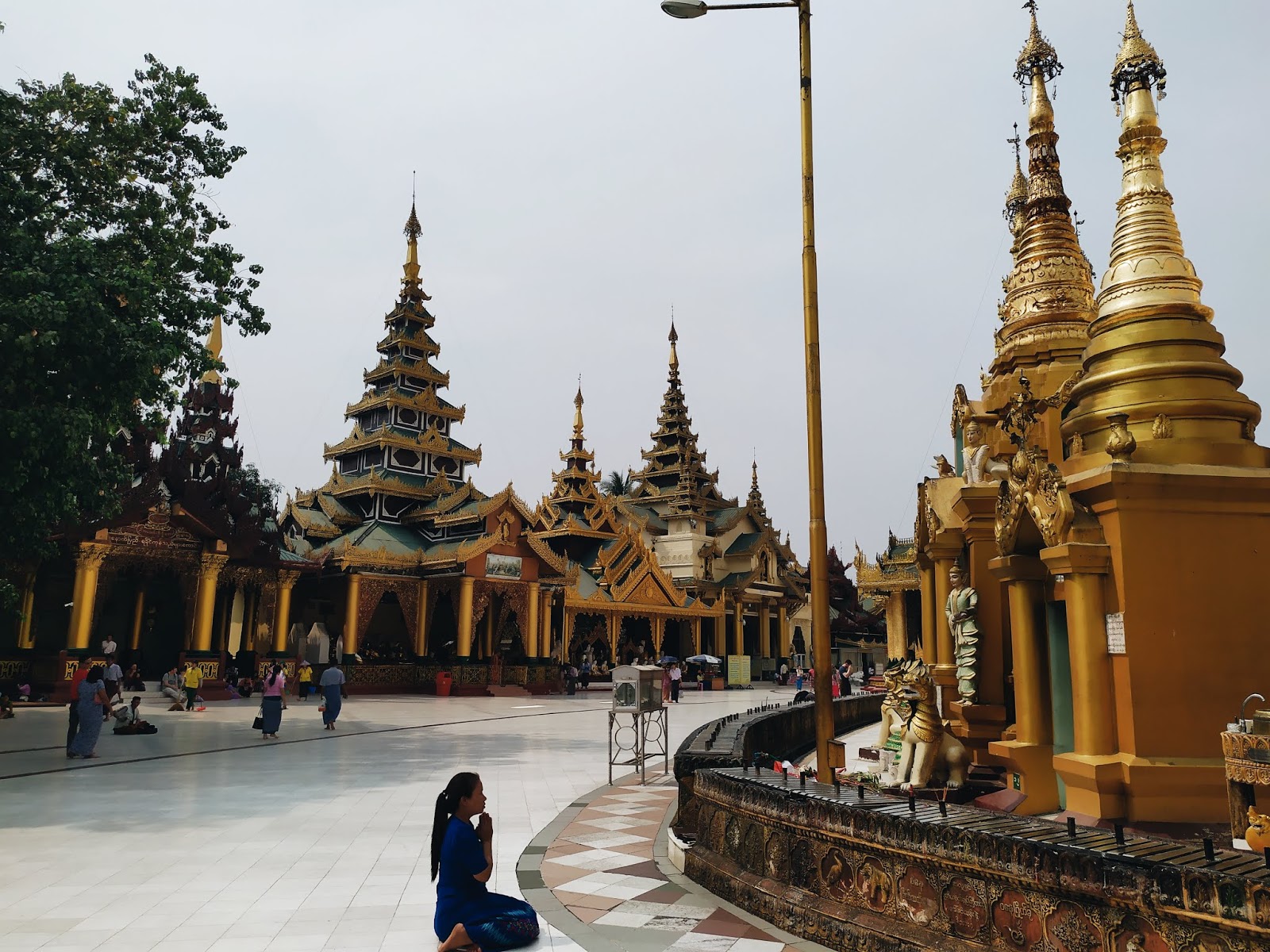- Location: The Shwedagon Pagoda is located in the south of Yangon on the Singuttara Hill in Dagon Township. It is a huge complex and has four entrances. The most popular entrances are the southern and eastern entrances. All entrances except the eastern entrance have an elevator and an escalator.
 |
| The Shwedagon Pagoda - As viewed from one of the many prayer pavillions |
From a historical perspective the Shwedagon Pagoda was most likely built by the Mon people around the 6th-10th centuries AD. Over the centuries, subsequent dynasties left their mark on the pagoda by rebuilding and expanding it. It received royal patronage up till the last dynasty of Myanmar. The Pagoda has seen generous donations of gold and precious stones from the rulers for its ornamentation.
Currently the Shwedagon is listed as an Ancient Monument Zone and Protected and Preserved Zone in the Yangon City Heritage List. The Shwedagon has a very fascinating architecture, which even total newbies can appreciate. Standing at 99 metres tall, it is built in typical Burmese style. The pagoda stands on a hill and can be seen even from a distance in many parts of the city.
The base of the pagoda is covered with gold plates. Real gold was used to plate the pagoda! At the very top of the pagoda is a multi level umbrella-like structure called a hti. It is covered in diamonds, rubies, and other precious stones. Sometimes during the evening when the sun's rays hit the hti at an angle, the light get refracted in dazzling colours. The shrines and pavillions surrounding the pagoda are also decorated with precious stones and beautiful motifs.


Surrounding the pagoda are shrines with a Buddha in each of them for every day of the week. The Burmese believe there are 8 days of the week (Wednesday is divided into two days), and knowing the day you were born determines which shrine you will worship at. It is a fascinating experience watching people worship at their respective shrines by praying, pouring water, and making offerings of flowers and incense.
The best time to visit the Shwedagon is in the morning where there are few tourists and the air is cool or in the evening when prayers are going on, and the entire complex is lit up. Early mornings at Shwedagon feels mystical, while evenings are just so dazzling. Afternoons are also nice, but it gets quite hot. Nevertheless, the Shwedagon is awe-inspiring at whatever time it is visited.
Currently the Shwedagon is listed as an Ancient Monument Zone and Protected and Preserved Zone in the Yangon City Heritage List. The Shwedagon has a very fascinating architecture, which even total newbies can appreciate. Standing at 99 metres tall, it is built in typical Burmese style. The pagoda stands on a hill and can be seen even from a distance in many parts of the city.
The base of the pagoda is covered with gold plates. Real gold was used to plate the pagoda! At the very top of the pagoda is a multi level umbrella-like structure called a hti. It is covered in diamonds, rubies, and other precious stones. Sometimes during the evening when the sun's rays hit the hti at an angle, the light get refracted in dazzling colours. The shrines and pavillions surrounding the pagoda are also decorated with precious stones and beautiful motifs.


Surrounding the pagoda are shrines with a Buddha in each of them for every day of the week. The Burmese believe there are 8 days of the week (Wednesday is divided into two days), and knowing the day you were born determines which shrine you will worship at. It is a fascinating experience watching people worship at their respective shrines by praying, pouring water, and making offerings of flowers and incense.
The best time to visit the Shwedagon is in the morning where there are few tourists and the air is cool or in the evening when prayers are going on, and the entire complex is lit up. Early mornings at Shwedagon feels mystical, while evenings are just so dazzling. Afternoons are also nice, but it gets quite hot. Nevertheless, the Shwedagon is awe-inspiring at whatever time it is visited.
 |
| Hall of Five Buddhas |




Comments